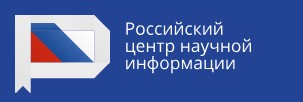Category of diversity in linguaphilosophic prospect
Abstract
Kulpina Valentina Grigorievna – Ph.D. of philology, associate professor of Slavic languages and cultures of foreign languages and region study faculty. Moscow State University of M.V. Lomonosov.
Tatarinov Victor Andreevich – Ph.D. of philology. President of Russian terminological society RossTerm.
Abstract. Category of diversity is described in subcategories of homogeneous and inhomogeneous multitudes, allowing to reveal a natural categorization within the category of quantity. An integral multitude, presented within the category of quantity, is formed, among other things of countable nouns, like: штуки, головы, кочаны, etc.: булочек четыре штуки, сорок голов скота, два кочана капусты. When account is carried out on the basis of countable nouns (explicable or implied), a man is abstracted from the individual characteristics of objects, they are thought of as the same person and attention to their differences is not focused on. It is described a type of homogeneous multitudes as the “group” refer to the number of the type стадо etc.: стадо овец, косяк рыб, лежбище тюленейстадо и др.: стадо овец, косяк рыб, лежбище тюленей. It is established cross-language differences filling lexical units within the multitude uniform on the basis of a comparison of the Russian and Polish languages.
The focus of the article is the heterogeneity of the multitude category, designated as a complementary multitude, in which the union objects to the group is based on the complementary elements provided in various multitudes, multitudes with different nominations and acting in conjunction with the names of the objects themselves, which form these multitudes: ассорти, коллекция, канцтовары. The essence of such multitudes is that elements within the group combined a certain connection (as opposed to a uniform multitude), are not the same, but different and complementary. It is nalyzed different groups of such multitudes in the household, business, the scientific field, in onomastics. Among the non-uniform multitudes, groups of people, for example, are viewed on the material of the Polish and German groups like in German Geschwister and polish rodzeństwo, indicating brothers and sisters in different proportions, while in normal circumstances, the lexems do not require refinements in these languages.
Key words: category of diversity, subcategory of multitude, complementary multitude, language dynamics, linguistic similarities and differences.
References
БАС – Большой академический словарь русского языка. Т. 1. М.; СПб.: Наука, 2004.
БРПС – Большой русско-польский словарь: в 2 т. М.; Варшава: Советская энциклопедия; Wiedza Powszechna, 1980.
БТС – Большой толковый словарь русского языка / гл. ред. С.А. Кузнецов. СПб.: Норинт, 1998.
МАС – Словарь русского языка: в 4 т. М.: Русский язык, 1981–1984.
МЭ – Математическая энциклопедия: в 5 т. М.: Сов. энциклопедия, 1977. Т. 3.
Павловский – Павловский И.Я. Немецко-русский словарь: в 2 т. М.: АСТ; Астрель; Хранитель, 2007.
DaFH – Wörterbuch Deutch als Fremdsprache. Ismaning; Mannheim: Hueber; Dudenverlag, 2003.
DaFK – Kempcke G. Wörterbuch Deutsch als Fremdsprache. Berlin; New York: de Gruyter, 2000.
Musierowicz – Musierowicz M. Wnuczka do orzechów. Poznań: AKAPIT PRESS, 2014.
NSRPPR – Nowy słownik rosyjsko-polski polsko-rosyjski. Warszawa: Wydawnictwo naukowe PWN, 2010.
Rakusa-Suszczewski – Rakusa-Suszczewski S. Roczniki antarktyczne. Warszawa: Zakład biologii Antarktyki PAN, 2004.
USJP – Uniwersalny słownik języka polskiego: W 4 t. Warszawa: Wydawnictwo naukowe PWN, 2003.
Sources
BAS – Bol’shoi akademicheskii slovar’ russkogo yazyka. T. 1. M.; SPb.: Nauka, 2004.
BRPS – Bol’shoi russko-pol’skii slovar’: v 2 t. M.; Varshava: Sovetskaya entsiklopediya; Wiedza Powszechna, 1980.
BTS – Bol’shoi tolkovyi slovar’ russkogo yazyka / gl. red. S.A. Kuznetsov. SPb.: Norint, 1998.
MAS – Slovar’ russkogo yazyka: v 4 t. M.: Russkii yazyk, 1981–1984.
ME – Matematicheskaya entsiklopediya: v 5 t. M.: Sov. entsiklopediya, 1977. T. 3.
Pavlovskii – Pavlovskii I.Ya. Nemetsko-russkii slovar’: v 2 t. M.: AST; Astrel’; Khranitel’, 2007.
DaFH – Wörterbuch Deutch als Fremdsprache. Ismaning; Mannheim: Hueber; Dudenverlag, 2003.
DaFK – Kempcke G. Wörterbuch Deutsch als Fremdsprache. Berlin; New York: de Gruyter, 2000.
Musierowicz – Musierowicz M. Wnuczka do orzechów. Poznań: AKAPIT PRESS, 2014.
NSRPPR – Nowy słownik rosyjsko-polski polsko-rosyjski. Warszawa: Wydawnictwo naukowe PWN, 2010.
Rakusa-Suszczewski – Rakusa-Suszczewski S. Roczniki antarktyczne. Warszawa: Zakład biologii Antarktyki PAN, 2004.
USJP – Uniwersalny słownik języka polskiego: W 4 t. Warszawa: Wydawnictwo naukowe PWN, 2003.
Downloads
How to Cite
Issue
Section
License
Authors who publish with this journal agree to the following terms:
- Authors retain copyright and grant the journal right of first publication with the work simultaneously licensed under a Creative Commons Attribution License that allows others to share the work with an acknowledgement of the work's authorship and initial publication in this journal.
- Authors are able to enter into separate, additional contractual arrangements for the non-exclusive distribution of the journal's published version of the work (e.g., post it to an institutional repository or publish it in a book), with an acknowledgement of its initial publication in this journal.
- Authors are permitted and encouraged to post their work online (e.g., in institutional repositories or on their website) prior to and during the submission process, as it can lead to productive exchanges, as well as earlier and greater citation of published work (See The Effect of Open Access).



















